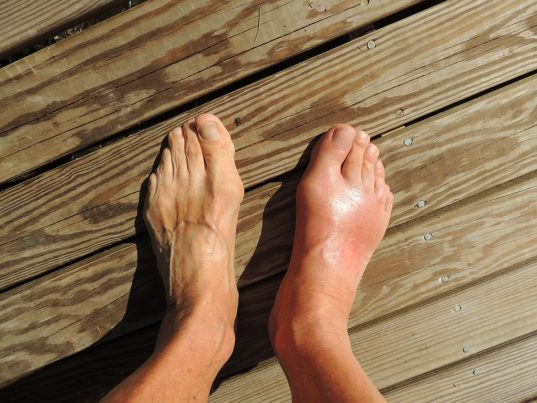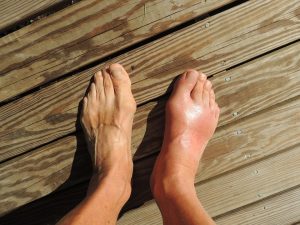
Colcrys – uses, health risks, and side effects at NaturalPedia.com
Wednesday, August 22, 2018 by Michelle Simmons
http://www.naturalpedia.com/colcrys-uses-health-risks-and-side-effects-at-naturalpedia-com.html

Colcrys (generic name: Colchicine) is a prescription medicine used for the treatment of gout in adults, and to treat a genetic condition known as familial Mediterranean fever (FMF) in adults and children who are at least four years old. Gout is determined by sudden, severe pain in the joints, which is caused by high levels of uric acid in the blood. On the other hand, FMF is a condition that causes fever, pain, and swelling of the lungs, joints, and stomach.
Colcrys belongs to a class of medicines known as anti-gout agents, which works by influencing the way the body responds to uric acid crystals, thus decreasing swelling and pain. It comes in the form of oral tablets that can be taken with or without food. Colcrys is the only brand of colchicine that has been approved by the U.S. Food and Drug Administration (FDA) as of 2009. Generic forms of colchicine have been used for the treatment or prevention of attacks of gout, or for the treatment of symptoms Behcet’s syndrome, such as swelling, redness, warmth, and pain. However, Colcrys is not a cure for gouty arthritis or Behcet’s syndrome. It will also not prevent these conditions from progressing.
Colcrys can interact with other medications, which can result in harmful effects. It should also not be taken by people who are allergic to colchicine or those who have liver or kidney disease.

Known side effects of Colcrys
The common side effects of Colcrys include the following:
- Diarrhea
- Nausea
- Stomach cramps or stomach pain
- Vomiting
Colcrys can also cause serious side effects that will need immediate medical attention. These include:
- Blood in the urine
- Fatigue
- Muscle pain or weakness
- Numbness of the fingers or toes
- Paleness or grayness of the lips, tongue, or palms
- Severe vomiting or diarrhea
- Sore throat, fever, chills, or other signs of infection
- Symptoms of an allergic reaction, which may include hives, breathing difficulties, or swelling of the face, lips, tongue, or throat
- Unusual bleeding or bruising
- Weakness
Body systems that may be harmed by Colcrys
The body systems commonly harmed by Colcrys include the following:
- Digestive system, as it commonly causes diarrhea, abdominal cramping, abdominal pain, nausea, and vomiting
- Respiratory system, as it commonly causes pharyngolaryngeal pain
Food items or nutrients that may prevent Colcrys’ side effects
The following food items may prevent and treat diarrhea, which is a common side effect of Colcrys:
- Apple juice
- Applesauce
- Buttermilk
- Caraway tea
- Chamomile tea
- Clear broth
- Honey
- Orange peel tea
- Rice
- Vinegar water
Treatments, management plans for Colcrys’ side effects
The following natural remedies can help treat diarrhea, a common side effect of Colcrys:
- Hydration – Diarrhea can increase the risk of dehydration, which can be fatal. To stay hydrated, drink plenty of fluids, especially water, and avoid alcohol, milk, soda, and other carbonated or caffeinated drinks.
- Probiotics – Probiotics contain beneficial bacteria that work in the intestines to create a healthy gut environment. Foods that contain probiotics include kefir, kimchi, natto, pickles, and dark chocolate.
Where to learn more
- 5 Must-Have Fruits to Include in Your Gout Diet
- Colchicine side effects, nutrient depletions, herbal interactions and health notes:
- Eliminate gout, arthritis and fibromyalgia pain FAST with 3 natural home remedies
- Gout – Seek a drugless approach to this painful condition
- Use Homeopathic Gout Remedies: Colchicum, Ledum, Nux Vomica and Aconite
Summary
Colcrys (generic name: colchicine) is a prescription medicine used for the treatment of gout in adults and familial Mediterranean fever (FMF) in adults and children who are at least four years old.
Colcrys belongs to a class of medicines known as anti-gout agents, which works by influencing the way the body responds to uric acid crystals.
Colcrys commonly causes diarrhea, nausea, stomach cramps or stomach pain, and vomiting.
Colcrys also causes serious side effects, such as blood in the urine, fatigue, muscle pain, numbness of the fingers or toes, paleness of the lips, tongue, or palms, severe vomiting or diarrhea, sore throat, allergic reactions, unusual bleeding or bruising, and weakness.
Sources include:
Tagged Under: Tags: Colcrys





